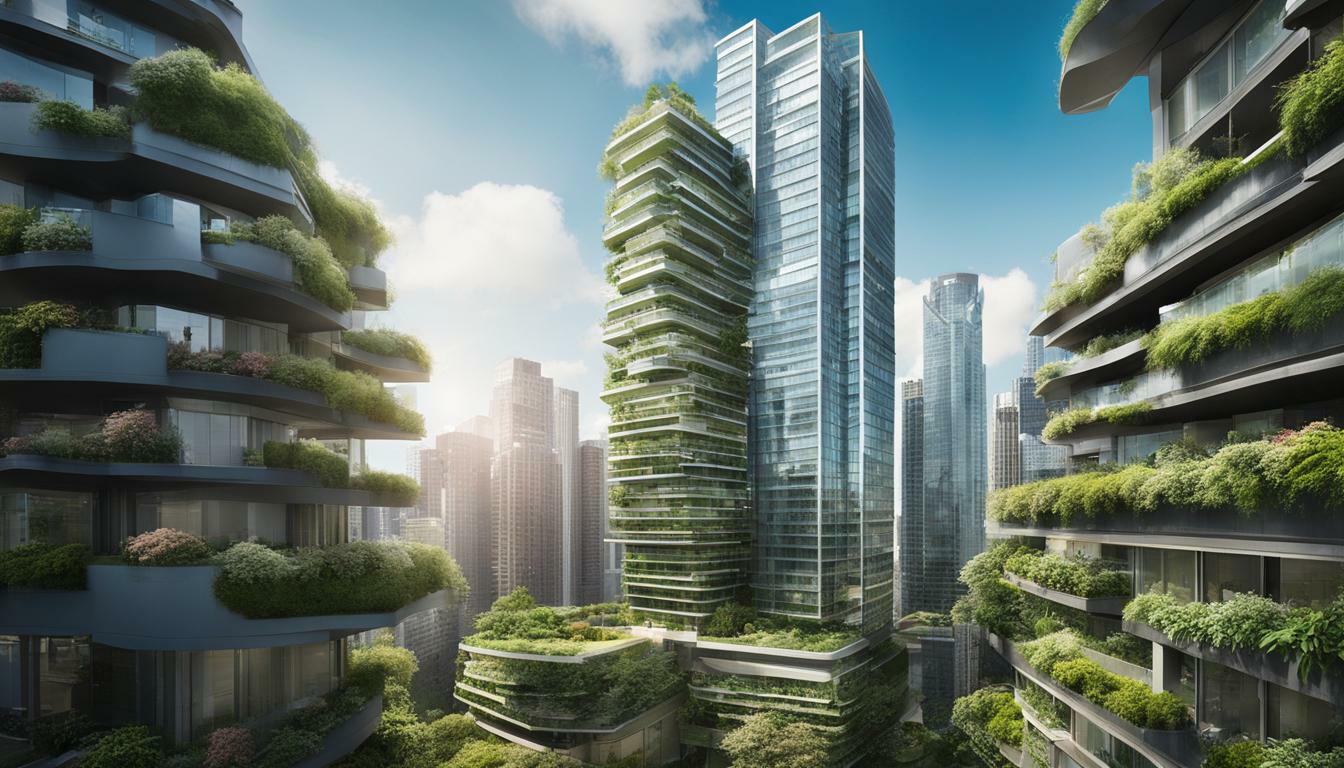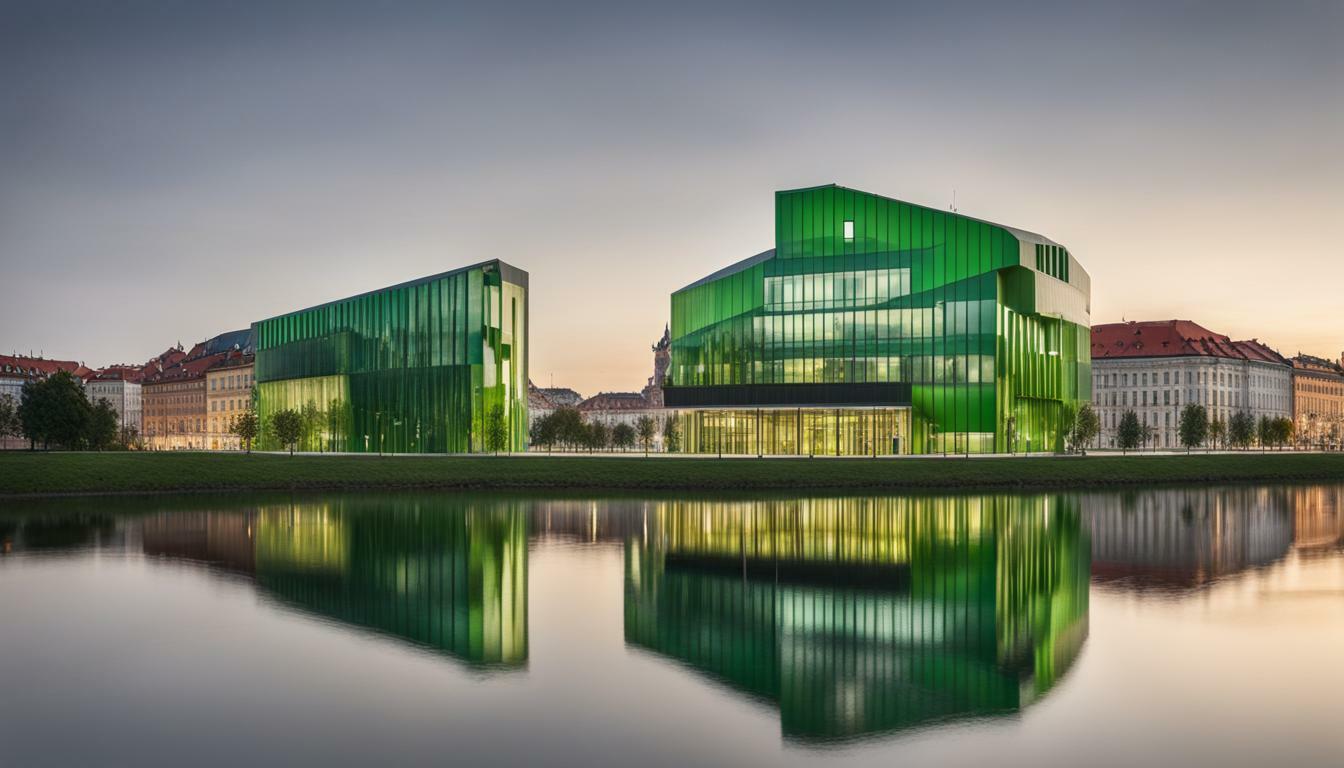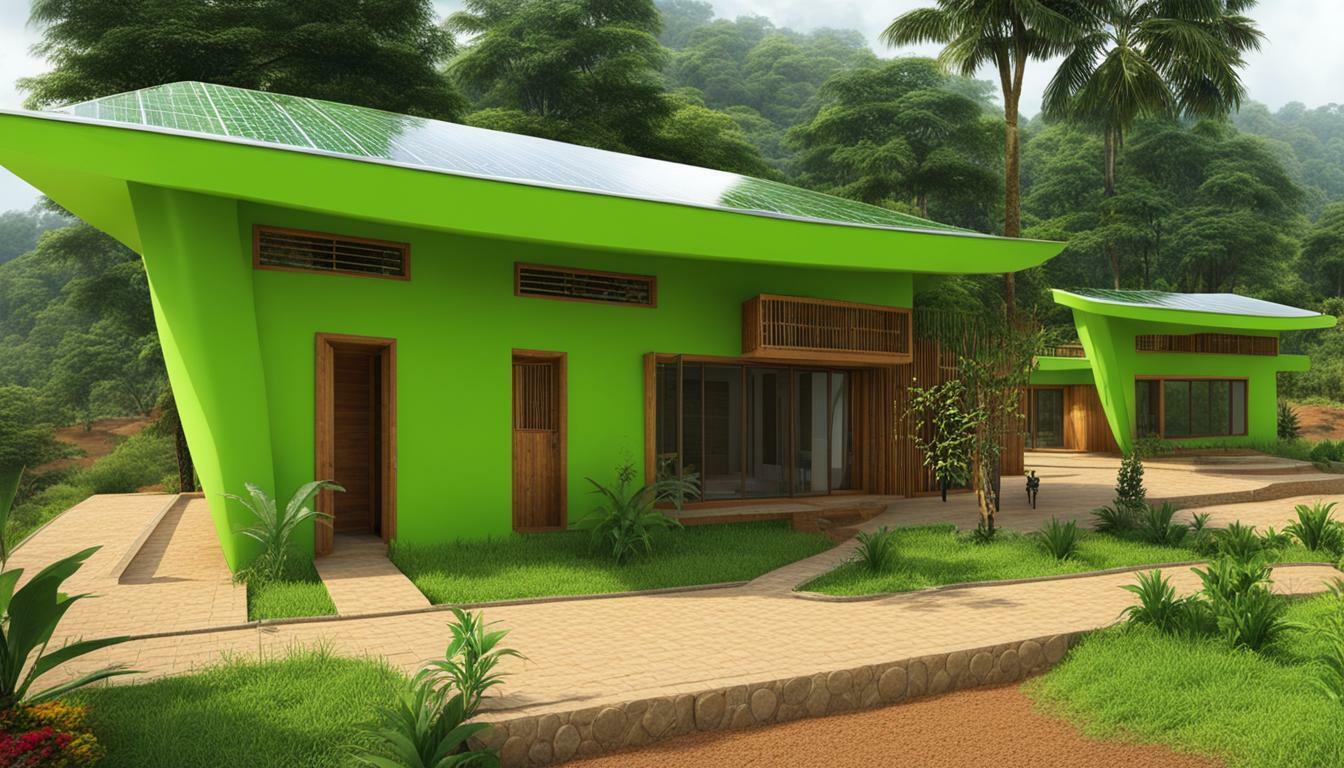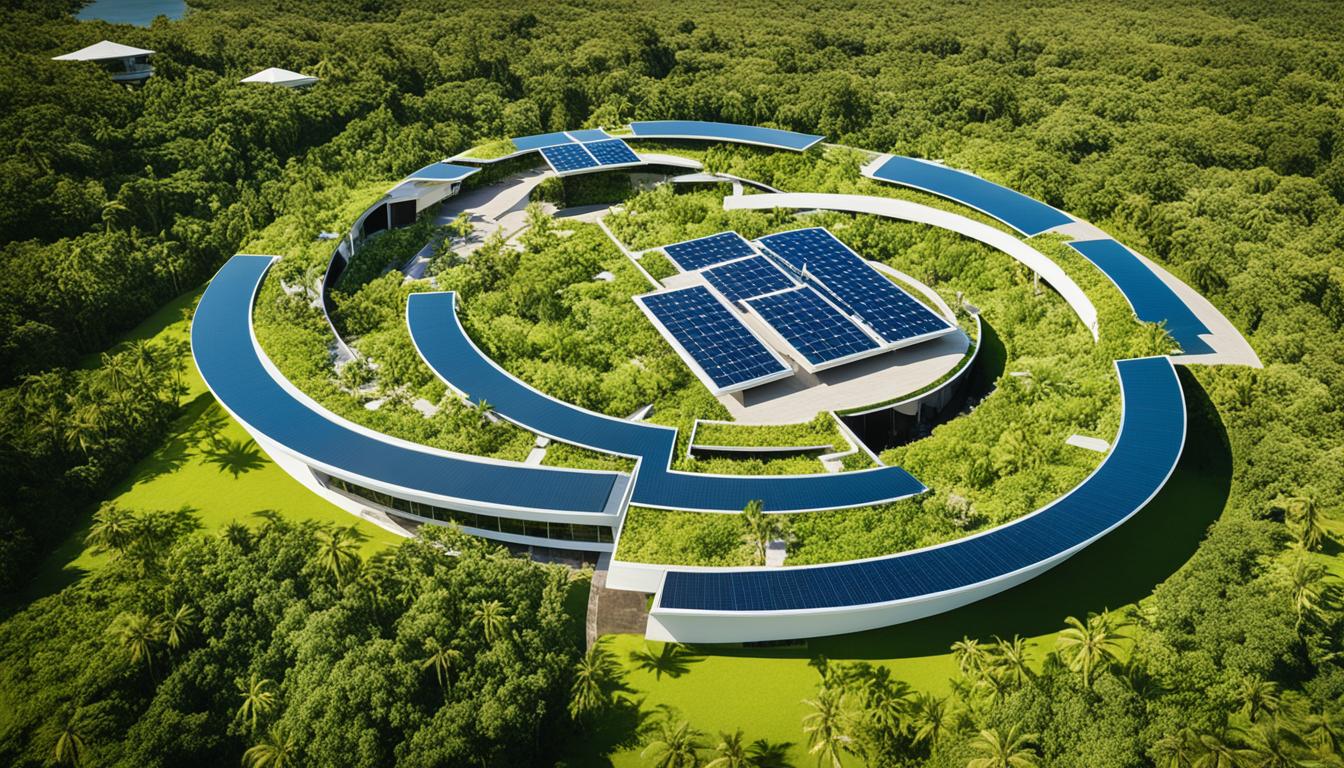Dominica Green Building History
Dominica, known as the Nature Isle of the Caribbean, has a rich history of sustainable construction practices and environmentally friendly architecture. The island has long recognized the importance of preserving its natural resources, and this commitment is reflected in its building practices.
From the use of eco-friendly materials to the integration of renewable energy sources, Dominica has established itself as a leader in sustainable development. The island’s focus on green building has not only contributed to the preservation of its unique ecosystem but has also created economic opportunities and improved the quality of life for its residents.
- Dominica has a long history of sustainable construction practices.
- The island is committed to environmentally friendly architecture and preservation of natural resources.
- Green building in Dominica has contributed to economic opportunities and improved quality of life for residents.
- Eco-friendly materials and renewable energy sources are widely used in Dominica’s construction industry.
- The island’s focus on sustainable development has established it as a leader in green building practices.
Green Building Practices in Dominica
Dominica has been at the forefront of sustainable construction for decades, with a particular emphasis on green building practices. The island’s commitment to eco-friendly construction methods is evident in the use of sustainable building materials, the implementation of renewable energy sources, and the integration of environmental conservation efforts in construction projects.
The use of sustainable building materials is a key feature of green building practices in Dominica. Local materials such as bamboo, clay, and stone are commonly used in construction and have proven to be durable, cost-effective, and eco-friendly. In addition, recycled materials such as concrete and steel are also utilized, reducing waste and lowering the carbon footprint of construction projects.
| Eco-friendly construction methods in Dominica include: |
|---|
| Passive Design: Buildings are designed to maximize natural light and ventilation, reducing the need for artificial lighting and cooling. |
| Rainwater Harvesting: Rainwater is collected and stored for use in irrigation, toilet flushing, and other non-potable purposes. |
| Solar Energy: Solar panels are commonly used to generate electricity, reducing the reliance on traditional energy sources. |
The integration of renewable energy sources is another important aspect of green building practices in Dominica. The island’s commitment to sustainable development has led to the implementation of renewable energy projects, such as the geothermal power plant in Roseau Valley, which provides a significant portion of the island’s electricity needs.
Environmental conservation efforts are also integrated into green building practices in Dominica. The island’s natural resources, including forests, rivers, and marine ecosystems, are protected through sustainable construction practices. Efforts are made to reduce pollution and waste, protect biodiversity, and promote sustainable land use practices.
Overall, green building practices in Dominica have proven to be effective in promoting sustainable development and reducing the negative impacts of construction on the environment. By utilizing sustainable building materials, implementing eco-friendly construction methods, integrating renewable energy sources, and promoting environmental conservation efforts, Dominica has become a model for green building practices in the Caribbean.

Dominica’s commitment to sustainable development has played a significant role in shaping the architectural landscape of the island. Over the years, green architecture in Dominica has evolved, incorporating sustainable design solutions that embrace the island’s natural beauty while minimizing its carbon footprint.
One of the key factors driving the evolution of green architecture in Dominica is the island’s vulnerability to natural disasters such as hurricanes. Consequently, architects and builders have had to design and construct buildings that can withstand the harsh tropical climate while being environmentally friendly and energy-efficient.
The use of sustainable building materials such as bamboo, timber, and recycled materials has become more prevalent in Dominica’s construction industry. These materials are readily available on the island, making them an affordable and eco-friendly alternative to traditional building materials.
Another critical aspect of green architecture in Dominica is the incorporation of passive design strategies, such as natural ventilation and shading devices. These design solutions help to reduce the energy consumption needed to cool buildings, resulting in lower carbon emissions and increased energy efficiency.
Green roofs and walls are also becoming increasingly popular in Dominica’s architecture. These green spaces help to provide insulation for buildings, regulate temperature, and improve air quality.
Overall, the evolution of green architecture in Dominica has been a positive step towards sustainable development on the island. By prioritizing environmentally friendly design solutions, Dominica can continue to preserve its natural resources while promoting economic growth.

“Dominica’s commitment to sustainable development has played a significant role in shaping the architectural landscape of the island.”
Renewable Energy in Dominica
Renewable energy is a critical component of sustainable development in Dominica. The island has made significant strides in harnessing its natural resources to produce clean energy and reduce its reliance on fossil fuels. Dominica’s government and private sector have worked together to implement renewable energy solutions that promote sustainable practices in the construction industry.
The island’s abundant geothermal, hydro, solar, and wind resources provide a vast potential for renewable energy. Dominica is currently home to the largest solar farm in the Eastern Caribbean, which generates around 40% of the island’s electricity needs. Moreover, the country has set an ambitious goal to become the world’s first climate-resilient nation, with plans to use renewable energy to power all its needs by 2030.
The integration of renewable energy sources in green buildings is a crucial aspect of sustainable development in Dominica. Architects and builders incorporate solar panels, geothermal heating, and cooling systems, and wind turbines in their designs and construction. The use of these renewable energy sources not only reduces energy costs but also minimizes the carbon footprint of buildings, making them more environmentally friendly.

Dominica’s commitment to sustainable development and the use of renewable energy has not gone unnoticed. The country has received international recognition for its efforts in this area. In 2017, Dominica won the United Nations Development Programme’s (UNDP) “Champion of the Earth” award for its leadership in climate action.
Overall, the integration of renewable energy in green buildings plays a vital role in advancing sustainable development in Dominica. It reduces energy costs, minimizes the carbon footprint of buildings, and promotes environmental conservation. Dominica’s emphasis on renewable energy shows that the island is serious about tackling climate change and building a more sustainable future for its residents.
Environmental Conservation Efforts in Dominica
Dominica is renowned for its natural beauty, including its lush rainforests, pristine beaches, and diverse marine life. As a result, the island has recognized the importance of preserving its natural resources and has taken significant steps towards environmental conservation.
One of the main drivers of environmental conservation in Dominica is the country’s commitment to sustainable development. This involves balancing economic growth with environmental protection and social development to ensure that the needs of both present and future generations are met.
To achieve this, the government has implemented a range of initiatives to promote sustainable practices in the construction industry. For example, the Dominica Green Building Code provides guidelines for the design and construction of green buildings, focusing on energy efficiency, water conservation, and the use of sustainable materials.
Additionally, the government has invested in renewable energy, such as solar and hydroelectric power, to reduce the island’s reliance on fossil fuels. This has not only helped to protect the environment but has also provided economic benefits by reducing energy costs for residents and businesses.
Furthermore, Dominica has established several protected areas, including national parks and marine reserves, to safeguard the island’s natural habitats and biodiversity. These areas not only provide important ecosystems services but also offer recreational opportunities for visitors.

In conclusion, environmental conservation is a core focus of Dominica’s sustainable development efforts. Through initiatives such as the Dominica Green Building Code, investment in renewable energy, and establishment of protected areas, the island is working to preserve its natural resources for future generations while promoting economic growth and social development.
Case Studies of Green Building Projects in Dominica
The green building movement is gaining momentum in Dominica, with many notable sustainable construction projects taking shape across the island. Let’s take a closer look at some of the most impressive case studies.
The Residences at Secret Bay
 The Residences at Secret Bay is a luxury eco-resort that combines stunning architecture with sustainable design. Set amid a lush rainforest with panoramic views of the Caribbean Sea, this development won the Green Globe certification for sustainable tourism in 2020. The buildings are constructed using locally-sourced materials such as stone, wood and bamboo while utilizing passive cooling techniques to reduce energy consumption. The resort also boasts an on-site solar-powered plant for electricity generation, and greywater is treated and used for irrigation purposes. The Residences at Secret Bay is a shining example of sustainable development in Dominica.
The Residences at Secret Bay is a luxury eco-resort that combines stunning architecture with sustainable design. Set amid a lush rainforest with panoramic views of the Caribbean Sea, this development won the Green Globe certification for sustainable tourism in 2020. The buildings are constructed using locally-sourced materials such as stone, wood and bamboo while utilizing passive cooling techniques to reduce energy consumption. The resort also boasts an on-site solar-powered plant for electricity generation, and greywater is treated and used for irrigation purposes. The Residences at Secret Bay is a shining example of sustainable development in Dominica.
The Dominica China Friendship Hospital
The Dominica China Friendship Hospital is a state-of-the-art healthcare facility that was built with sustainability in mind. The hospital features a solar panel system that provides renewable energy to the entire building, reducing its dependence on fossil fuels. Additionally, the facility is equipped with energy-efficient lighting fixtures and motion sensors to reduce unnecessary power use. Rainwater harvesting is also implemented to reduce the amount of potable water used by the hospital. The Dominica China Friendship Hospital is a prime example of how green building practices can be incorporated into critical infrastructure projects.
The Waitukubuli National Trail
The Waitukubuli National Trail is the first long-distance walking trail in the Caribbean. The trail spans 185km through the length of Dominica, taking hikers through a diverse range of ecosystems, including rainforests, rivers, and waterfalls. The trail not only promotes eco-tourism but also serves as a prime example of sustainable land use. The trail was constructed mainly by hand, using locally-sourced materials and labor to support the local economy. Additionally, the trail is designed to minimize erosion, and efforts are taken to maintain the natural habitats of the flora and fauna that live along the route. The Waitukubuli National Trail is an excellent example of how sustainable development can be integrated with recreational tourism in Dominica.
These case studies demonstrate the impressive strides that Dominica has taken in sustainable development and green building practices. As the island continues to prioritize environmental conservation and eco-friendly infrastructure, we can expect to see more exciting projects emerge in the future.
Benefits of Green Building in Dominica
Green building practices in Dominica offer numerous benefits to the environment, economy, and quality of life for residents. Sustainable construction in Dominica has the potential to reduce carbon emissions, preserve natural resources, and improve air and water quality.
Green building practices also provide economic benefits by reducing energy costs and creating jobs in the construction and renewable energy industries. The use of sustainable building materials in Dominica reduces transportation costs and promotes local industries.
Additionally, green building practices in Dominica have the potential to improve the well-being of residents. Buildings designed with environmentally friendly architecture can improve indoor air quality and promote natural lighting and ventilation. The integration of green spaces and sustainable transportation options also promotes physical activity and reduces stress levels.
Overall, the adoption of green building practices in Dominica supports the island’s commitment to sustainable development and the preservation of the natural beauty of the island for generations to come.

Conclusion
In conclusion, Dominica’s green building history is a testament to the island’s commitment to sustainable development. The emphasis on environmentally friendly architecture and the implementation of green building practices have contributed to the preservation of natural resources and a reduction in carbon emissions.
The evolution of green architecture in Dominica has led to the use of sustainable building materials and eco-friendly construction methods, while the integration of renewable energy sources in buildings has furthered the island’s commitment to sustainability.
Environmental conservation efforts in Dominica have been a priority, and initiatives taken to protect natural resources have helped to promote sustainable practices in the construction industry.
Benefits of Green Building in Dominica
The benefits of green building in Dominica are numerous. By reducing carbon emissions, sustainable building practices have a positive impact on the environment. In addition, green building can lead to significant cost savings in the long run and even improve the health and well-being of the residents.
The case studies of green building projects in Dominica have shown successful examples of sustainable construction practices on the island. These projects have not only contributed to the reduction of carbon emissions but also improved the quality of life for the residents.
In conclusion, green building practices are essential for the sustainable development of Dominica. The island’s commitment to sustainability and the implementation of green building practices have led to significant positive impacts on the environment, economy, and quality of life for the residents.
FAQ
What is the green building history of Dominica?
The green building history of Dominica refers to the adoption of sustainable construction practices and environmentally friendly architecture on the island.
What are some green building practices in Dominica?
Some green building practices in Dominica include the use of sustainable building materials and the implementation of eco-friendly construction methods.
How has green architecture evolved in Dominica?
Green architecture in Dominica has evolved through the emphasis on sustainable development, which has greatly influenced the architectural landscape of the island.
What is the use of renewable energy in Dominica?
Dominica has made significant strides in utilizing renewable energy sources, showcasing its commitment to sustainable development in the construction industry.
What are the environmental conservation efforts in Dominica?
Dominica has implemented various initiatives to protect natural resources and promote sustainable practices in the construction industry, highlighting its dedication to environmental conservation.
Can you provide examples of green building projects in Dominica?
Certainly! There are numerous notable green building projects in Dominica that showcase successful sustainable construction practices on the island.
What are the benefits of green building in Dominica?
Green building in Dominica offers a range of benefits, including positive impacts on the environment, economy, and the overall quality of life for residents.
What is the conclusion of the article?
The conclusion summarizes the key points discussed throughout the article, emphasizing the importance of green building practices in Dominica and the island’s commitment to sustainability.








